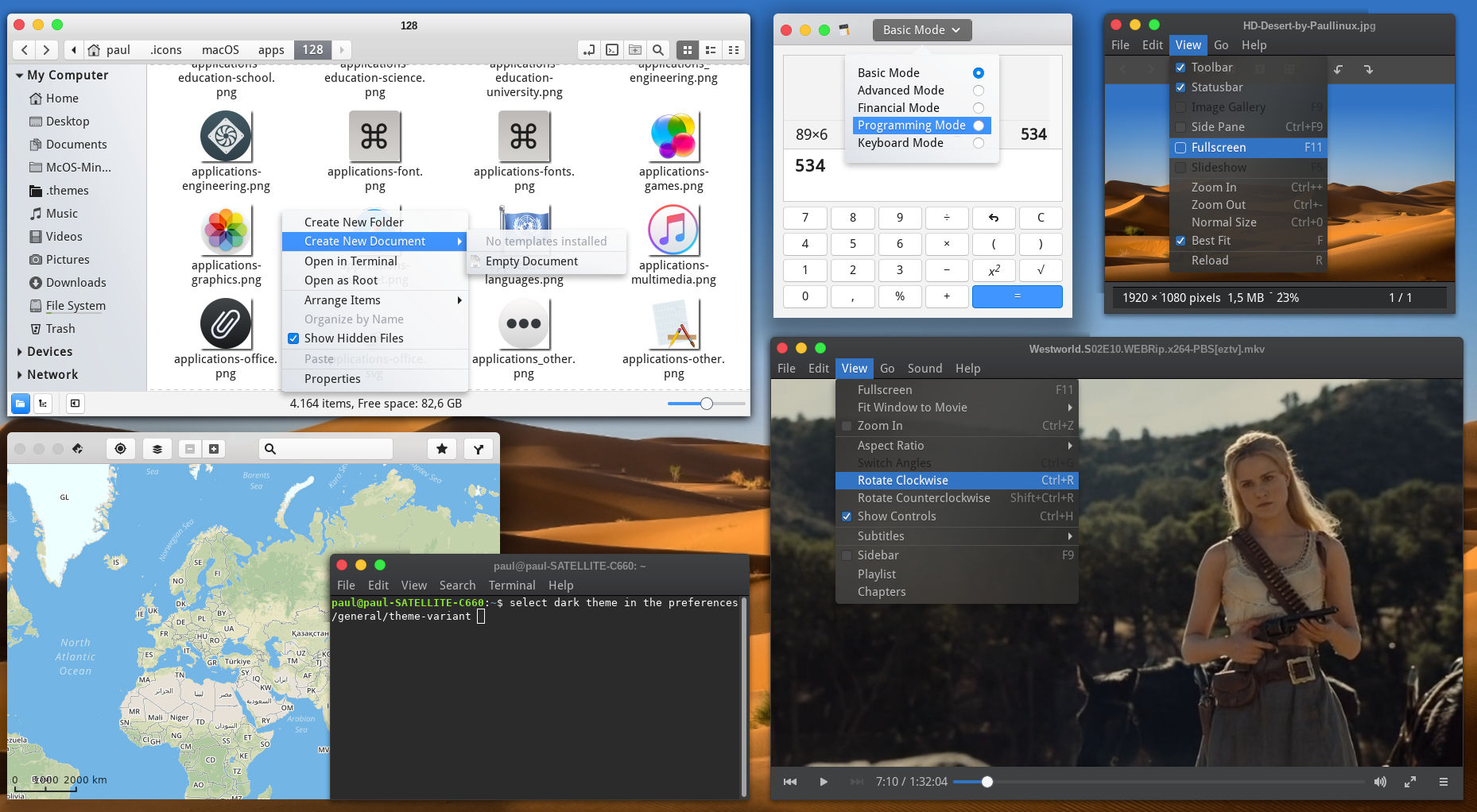

- Linux mac os x snow leopard theme for mac os#
- Linux mac os x snow leopard theme install#
- Linux mac os x snow leopard theme drivers#

Linux mac os x snow leopard theme install#
I outlined this install on the Unix/Linux forum here on StackExchange The primary hard drive is where all the magic happened. 1 hard drive had 2 partitions, 1 for the OS X installer (so I didn't have to wait on the slowness of the SuperDrive) and the other partition as a TimeMachine backup of the installation. My XServe had 2 1.3GHz (RISC) CPUs, 2GB RAM and 2 80GB HDD's. I personally did this on an XServe G4 (PowerPC), which was more difficult than the Intel based Macs so your mileage will be better.

I've not found the "dual booting" with Linux and MacOSX on a true Mac easy, but then I didn't need it so it was just a "quick" exercise, rather than need to have.Īnother "option" for backups is to "clone" the MacBook's disk using CarbonCop圜loner (CCC or something) that provides you a bootable "backup disk"/
Linux mac os x snow leopard theme drivers#
from 's download site, as I've found them to "not be available" for the old MacBooks via the boot camp utility, to install all the other (after installation) drivers etc. You might need to download the needed BootCamp. If you choose the Windows 7 route, the better advice will be to remove any and everything you do NOT want on the Mac side to have the biggest space available, and then make use of the BootCamp features as that'll help you with the environment needed to boot Windows 7, as Windows 7 doesn't support UEFI/EFI "easily" out of the box (unless you use the 64bit version, and even there are "gotchas"). Windows 7 (if installed through Bootcamp) works pretty well without much hassle.Įchoing the "backup" to have the original disks available if you ever want to return to an old MacOSX, the only warnings I'll give is that you'll be having fun with EFI using Linux, so you might need to investigate the versions that supports that (and the UEFI support should be sufficient). I'd stick with Ubuntu if you like fancy, or Linux Mint if you like simple. Plus side: With a laptop that old, there should be a decent amount of documentation for making your hardware work with Linux. I had a particularly rough time getting wifi to work in Ubuntu 12.blah on an older MacBook Pro. Linux will take some tinkering to get working properly. If you have the original install disks, you shouldn't have an issue with restoring it. I think you can get away with 5-10GB for the Snow Leopard partition. Mainly because if something goes wrong (or if you don't like either alternative) it's much easier to recover a MacBook using the Mac OS. However, if you don't have those disks, I would strongly recommend keeping the Mac OS X install and creating a new partition (shrinking the Mac partition) for the new OS.
Linux mac os x snow leopard theme for mac os#
Do you have the original install disks for Mac OS X? If so, there shouldn't be any issues with wiping the Mac partition completely off the hdd.


 0 kommentar(er)
0 kommentar(er)
